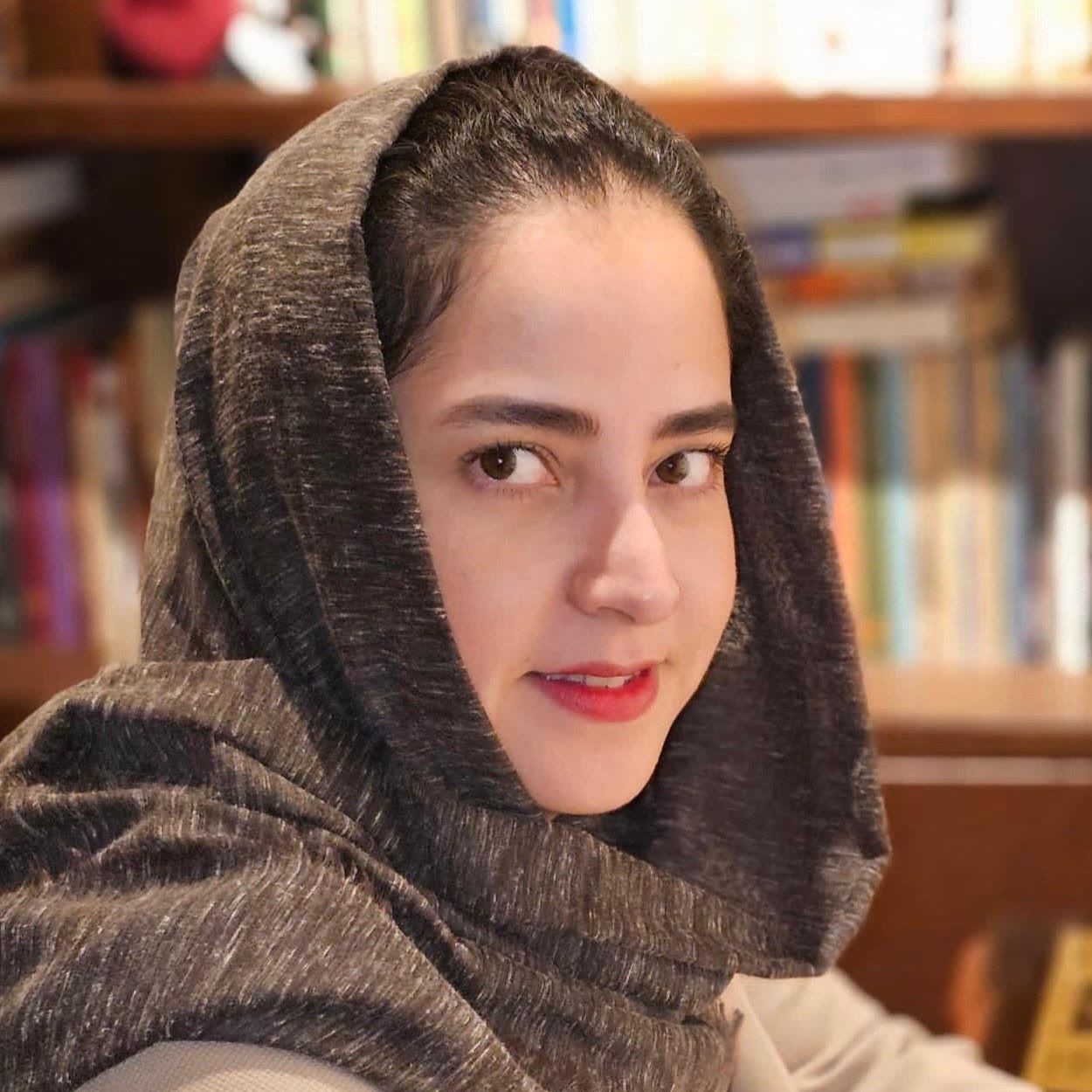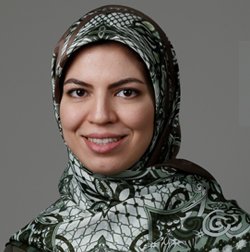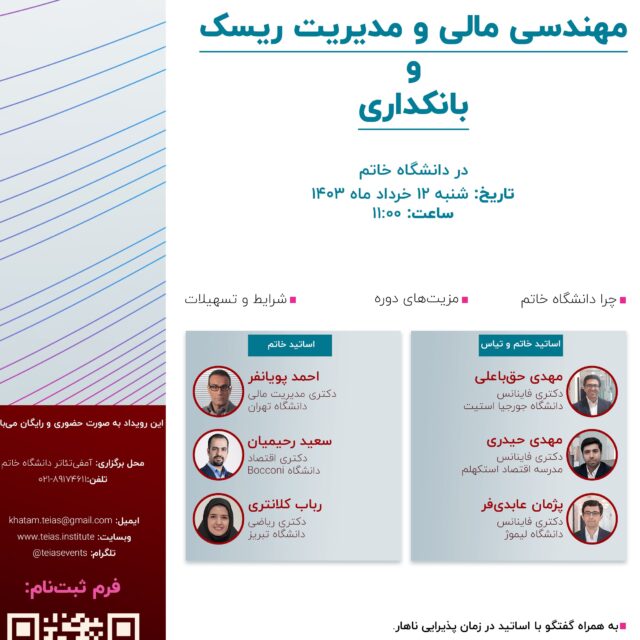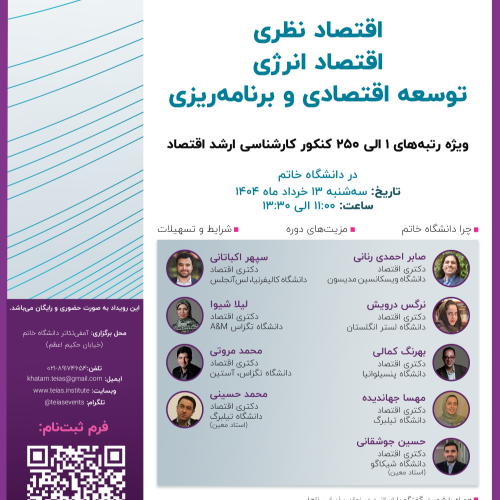
Recent Publications
- Flood, Farms and Credit: The Role of Branch Banking in the Era of Climate Change
- Marketplace Lending: A Resilient Alternative in the Face of Natural Disasters?
- The Sale of Failed Banks: The Characteristics of Acquirers – As Well as of the Acquired
- Flood, Farms and Credit: The Role of Branch Banking in the Era of Climate Change
- Marketplace Lending: A Resilient Alternative in the Face of Natural Disasters?
- The Sale of Failed Banks: The Characteristics of Acquirers – As Well as of the Acquired
Abstract
Using Iran’s unexpected flood in April 2019 as a natural experiment, we show that local branches bridge the time gap between the disaster and governmental aids by immediately increasing their lending for two months following the flood. Analyzing proprietary information on more than 53,000 farmers, we find that farmers with a stronger relationship with their branch - particularly younger and females - are more likely to receive a recovery loan. Our findings underscore that despite recent technological advancements, relationship-based branch banking is still important for agrarian societies during catastrophic events.
Keywords: Bank branch, Relationship lending, Climate change, Agricultural loans
JEL Classification: G21, G28, O13, Q14, Q54
Abstract
Using Iran’s unexpected flood in April 2019 as a natural experiment, we show that local branches bridge the time gap between the disaster and governmental aids by immediately increasing their lending for two months following the flood. Analyzing proprietary information on more than 53,000 farmers, we find that farmers with a stronger relationship with their branch - particularly younger and females - are more likely to receive a recovery loan. Our findings underscore that despite recent technological advancements, relationship-based branch banking is still important for agrarian societies during catastrophic events.
Keywords: Bank branch, Relationship lending, Climate change, Agricultural loans
JEL Classification: G21, G28, O13, Q14, Q54
Abstract
Using Iran’s unexpected flood in April 2019 as a natural experiment, we show that local branches bridge the time gap between the disaster and governmental aids by immediately increasing their lending for two months following the flood. Analyzing proprietary information on more than 53,000 farmers, we find that farmers with a stronger relationship with their branch - particularly younger and females - are more likely to receive a recovery loan. Our findings underscore that despite recent technological advancements, relationship-based branch banking is still important for agrarian societies during catastrophic events.
Keywords: Bank branch, Relationship lending, Climate change, Agricultural loans
JEL Classification: G21, G28, O13, Q14, Q54
Abstract
Using Iran’s unexpected flood in April 2019 as a natural experiment, we show that local branches bridge the time gap between the disaster and governmental aids by immediately increasing their lending for two months following the flood. Analyzing proprietary information on more than 53,000 farmers, we find that farmers with a stronger relationship with their branch - particularly younger and females - are more likely to receive a recovery loan. Our findings underscore that despite recent technological advancements, relationship-based branch banking is still important for agrarian societies during catastrophic events.
Keywords: Bank branch, Relationship lending, Climate change, Agricultural loans
JEL Classification: G21, G28, O13, Q14, Q54
Abstract
Using Iran’s unexpected flood in April 2019 as a natural experiment, we show that local branches bridge the time gap between the disaster and governmental aids by immediately increasing their lending for two months following the flood. Analyzing proprietary information on more than 53,000 farmers, we find that farmers with a stronger relationship with their branch - particularly younger and females - are more likely to receive a recovery loan. Our findings underscore that despite recent technological advancements, relationship-based branch banking is still important for agrarian societies during catastrophic events.
Keywords: Bank branch, Relationship lending, Climate change, Agricultural loans
JEL Classification: G21, G28, O13, Q14, Q54
Abstract
Using Iran’s unexpected flood in April 2019 as a natural experiment, we show that local branches bridge the time gap between the disaster and governmental aids by immediately increasing their lending for two months following the flood. Analyzing proprietary information on more than 53,000 farmers, we find that farmers with a stronger relationship with their branch - particularly younger and females - are more likely to receive a recovery loan. Our findings underscore that despite recent technological advancements, relationship-based branch banking is still important for agrarian societies during catastrophic events.
Keywords: Bank branch, Relationship lending, Climate change, Agricultural loans
JEL Classification: G21, G28, O13, Q14, Q54























